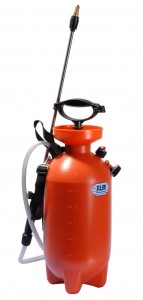 For most people a sprayer is just a sprayer and not much thought is put into it. Whether it sprays erratically or too much doesn’t matter as long as it gets the bugs all wet and kills them dead or so the saying goes.
For most people a sprayer is just a sprayer and not much thought is put into it. Whether it sprays erratically or too much doesn’t matter as long as it gets the bugs all wet and kills them dead or so the saying goes.
Having a quality spray can make a huge difference in your effectiveness and goes along way in the safety department as well. Notice I didn’t say a “quality sprayer” but a “quality spray.” You don’t need to spend the full $ 300 plus dollars to get a professional sprayer but you may want to invest a little time, effort and just a few bucks to give you the accurate pin point application tool you’ll need in your war on bugs.
The problem with almost all hand pump sprayers you can buy is that the choice of spray patterns is very limited. Basically the do it yourself sprayer goes from a thick, sloppy pin stream for cracks and crevices to an uneven, equally sloppy cone pattern that is used for treating larger areas such as carpets for fleas. Both patterns are extremely heavy and use a lot of material fast, plus there is very little help in between the patterns as you spin the spray head to adjust. The thick pin just gets thicker and the cone spray gets thinner and eventually you are just spraying a perfect circle around your wrist.
There are better spray bottles available but they are usually the squeeze trigger type that siphon and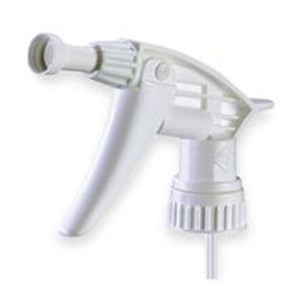 pump liquid as you are repeatedly squeezing the trigger. Although it can produce a nice tight pin stream or even a decent fan spray pattern its major downfall is that all that squeezing (pumping) makes it impossible to be very accurate. If you have a lot of spraying to do your arm will get very tired quickly and that just increases your off target application.
pump liquid as you are repeatedly squeezing the trigger. Although it can produce a nice tight pin stream or even a decent fan spray pattern its major downfall is that all that squeezing (pumping) makes it impossible to be very accurate. If you have a lot of spraying to do your arm will get very tired quickly and that just increases your off target application.
Now you might be saying “what’s the big deal and why does it matter? The area still gets sprayed right?”
I guess that may be fine if you are spraying weeds or ant mounds but if you are attempting a German roach job in and around your kitchen you are going to need to be careful not to over-spray and causing a dangerous mess that’s difficult to clean. Roaches are extremely keen already about avoiding pesticides so if you just slop it around the area you may just be doing more harm than good in more ways than one. Flea treatments are meant to cover larger areas but uneven sprays can cause staining and excess wetness is never good especially if you are treated furniture.
The control of a professional sprayer
You friendly bug man knows all too well the benefits of having a sprayer that can deliver the exact pattern or stream that you need. With a quick adjustment of the spray tip you can go from a fine pin stream for the smallest of crevices to a nice wide fan spray that can quickly cover large areas in an even metered way. The treatment is so much more exact and deliberate with little waste and mist that can go off target. Rather than a large puddle in the corners of your home or dripping baseboards that every curious puppy loves to lap up, you get an even professional application that hits its target every time.
What sprayer should I use
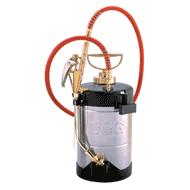 As of this writing I haven’t found anything better than a professional hand pump tank sprayer to get the job done. The two major brands are B&G and Chapin sprayers and thankfully for the do it yourself pest control person they are available for purchase if you’re willing to do a little hunting. Auction sites such as Ebay always have more than a few of these tanks for sale. You might get quite the deal with auction sites but most often I find the price even goes higher than if you just ordered through the company themselves.
As of this writing I haven’t found anything better than a professional hand pump tank sprayer to get the job done. The two major brands are B&G and Chapin sprayers and thankfully for the do it yourself pest control person they are available for purchase if you’re willing to do a little hunting. Auction sites such as Ebay always have more than a few of these tanks for sale. You might get quite the deal with auction sites but most often I find the price even goes higher than if you just ordered through the company themselves.
Now so far this can’t be that much help for you, this is suppose to be a place where you can get money saving tips and spending over $300.00 for the occasional pest job you’re going to do doesn’t quite seem to fit this theme.
Modify your current sprayer
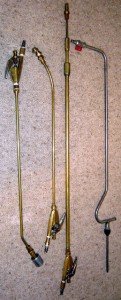 The answer for most people is to take the best attributes of a professional applicator and combine it with what you already have. I do this with our backpack sprayers and it works very well. We use large backpacks for our exterior treatments and have the same problem as you do with the store bought sprayers. The wands that come with the standard backpack have the same under performing tips and I hate using them. The B&G sprayer is Ok for exterior but you can’t pump it up enough to reach the really high peaks and you end up filling up your sprayer about every other job. To gain the same benefits as the indoor sprayer and the backpack I simply attach a wand from the B&G to my backpack. You can do the same with your hand held pump sprayer for about half the cost and transform your sloppy applications to a pin point accurate treatment applicator that won’t fail you.
The answer for most people is to take the best attributes of a professional applicator and combine it with what you already have. I do this with our backpack sprayers and it works very well. We use large backpacks for our exterior treatments and have the same problem as you do with the store bought sprayers. The wands that come with the standard backpack have the same under performing tips and I hate using them. The B&G sprayer is Ok for exterior but you can’t pump it up enough to reach the really high peaks and you end up filling up your sprayer about every other job. To gain the same benefits as the indoor sprayer and the backpack I simply attach a wand from the B&G to my backpack. You can do the same with your hand held pump sprayer for about half the cost and transform your sloppy applications to a pin point accurate treatment applicator that won’t fail you.
The same auction sites will have just the wands for sale and depending on the length you want you may get away with $100.00 or less. Make sure to do your due diligence and ask questions to make sure they are in good working order. The shorter the wand the lower the price for the most part and for pest control purposes longer doesn’t always mean better. Just make sure the tips (which are brass) have clear working holes where the different spray patterns come out. You may want to check the manufacturers sites for prices but you’ll soon learn that most of the cost in a professional sprayer is in the wand itself.
How to attach the wand
Most hoses that are used for hand held spray tanks are about 1/4 inch, if yours is much different you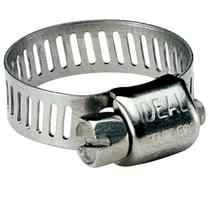 may need to purchase a reducer or coupler to make the connection. For our backpacks I don’t do anything to fancy. I simply cut cleanly or remove the hose from the stock wand. Apply a little silicone or grease to the inside hose end and slip a small hose clamp over the hose. The base of your new wand is threaded and you can go through the process of buying threaded couplers which would be ideal but most hoses will allow you to simply force the end over the threads with a little twisting until none of the threads are visible. Then you simply move your clamp up to the joined area and tighten with a screwdriver.
may need to purchase a reducer or coupler to make the connection. For our backpacks I don’t do anything to fancy. I simply cut cleanly or remove the hose from the stock wand. Apply a little silicone or grease to the inside hose end and slip a small hose clamp over the hose. The base of your new wand is threaded and you can go through the process of buying threaded couplers which would be ideal but most hoses will allow you to simply force the end over the threads with a little twisting until none of the threads are visible. Then you simply move your clamp up to the joined area and tighten with a screwdriver.
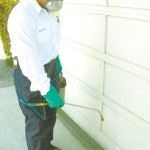 Now your old plastic underachieving sprayer is ready for action. Your crack and crevice treatments will never be better and the flea jobs you perform will rival the best any pro might do. This may seem like to much effort but converting your old sprayer and gaining the superior control over what and how much you spray will make you a true believer, one might even say, you’ve been converted.
Now your old plastic underachieving sprayer is ready for action. Your crack and crevice treatments will never be better and the flea jobs you perform will rival the best any pro might do. This may seem like to much effort but converting your old sprayer and gaining the superior control over what and how much you spray will make you a true believer, one might even say, you’ve been converted.




